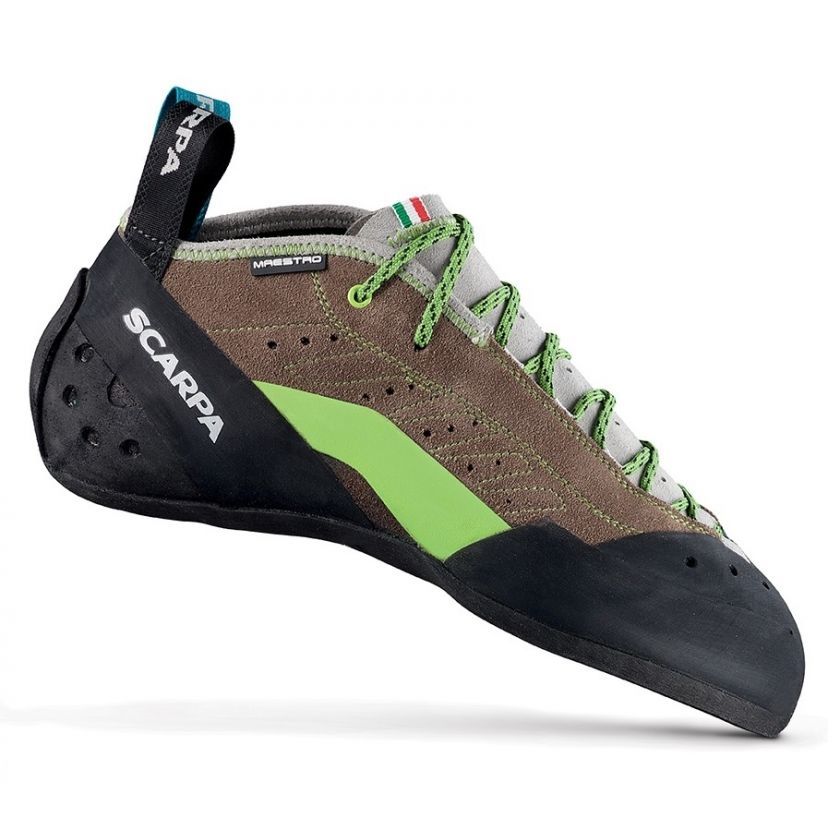Climbing is a fun and challenging sport that can be enjoyed by anyone, regardless of gender. However, when it comes to choosing the right climbing shoes, you may wonder if there are any differences between men’s and women’s models.
Are they just a matter of size and color, or are there other factors to consider?
In this blog post, we will answer this question and provide you with a comprehensive guide on how to find the best climbing shoes for your feet.
We will also introduce you to some of the best rock climbing shoes women can buy, from brands like La Sportiva, Scarpa, and Evolv.
The Main Differences Between Men and Women’s Climbing Shoes
Climbing shoes are not gender-specific, meaning that anyone can wear any shoe regardless of their sex.
However, there are some general differences between men and women’s climbing shoes that are based on the average foot shape and size of each sex.
According to a scientific study by the National Library of Medicine, men tend to have longer and broader feet than women when standardized to foot length.
Women also tend to have higher arches, narrower heels, smaller toe boxes, and lower ankles than men.
These differences result in some variations in the design and construction of men and women’s climbing shoes. Here are some of the main differences:
Volume
Women’s climbing shoes have less volume than men’s shoes, meaning that they are less spacious inside. This provides a more snug fit for narrow feet and prevents unwanted movement or slipping inside the shoe.
Cut
Women’s climbing shoes are low cut around the ankle, which allows more flexibility and mobility for the foot. They also have a lower profile, meaning that they are less bulky and closer to the foot.
Additionally, they have a longer toe box, a smaller heel cup, and a higher arch than men’s climbing shoes.
Last
The last is the shape of the shoe that determines its fit and performance. Women’s climbing shoes are built around a different last than men’s shoes, which reflects the typical foot shape of women.
The last affects the curvature, asymmetry, downturn, and stiffness of the shoe.

Sizes
Women’s climbing shoes come in different sizes than men’s shoes. Usually, women’s sizes are smaller than men’s sizes by about 1.5 to 2 sizes. For example, a women’s size 7 is equivalent to a men’s size 5 or 5.5.
Material
Women’s climbing shoes may be made of different materials than men’s shoes. For instance, some women’s shoes use synthetic materials instead of leather, which makes them lighter, more breathable, and more resistant to stretching.
Some women’s shoes also use softer rubber than men’s shoes, which makes them more sensitive and sticky but less durable.
Color palette
Women’s climbing shoes may have a different color palette than men’s shoes. While this does not affect the performance or fit of the shoe, it may appeal to different aesthetic preferences.
The Main Similarities Between Men and Women’s Climbing Shoes
Despite these differences, men and women’s climbing shoes share many similarities as well.
They both have the same purpose: to provide grip, sensitivity, and comfort on different types of rock and terrain. They also have similar features that affect their performance, such as:
Closure system
Climbing shoes can have different closure systems, such as lace-up, velcro, slip-on, or No-Edge. These systems affect how easy it is to put on and take off the shoe, how adjustable it is to your foot shape and size, and how secure it feels on your foot.
Downturn
The downturn is the amount of curve in the toe area of the shoe. A more downturned shoe is more aggressive and better for steep or overhanging climbs where you need more power and precision on small holds.
A less downturned shoe is more neutral and better for slab or vertical climbs where you need more balance and friction on larger holds.
Asymmetry
The asymmetry is the amount of twist in the toe area of the shoe. A more asymmetrical shoe is more technical and better for edging or pocket climbing where you need more accuracy and leverage on your big toe.
A less asymmetrical shoe is more comfortable and better for crack or smear climbing where you need more surface area contact on your foot.
Stiffness
The stiffness is the amount of flex in the sole of the shoe. A stiffer shoe is more supportive and better for edging or multi-pitch climbing where you need more stability and endurance on your foot.
A softer shoe is more sensitive and better for smearing or bouldering to you.

